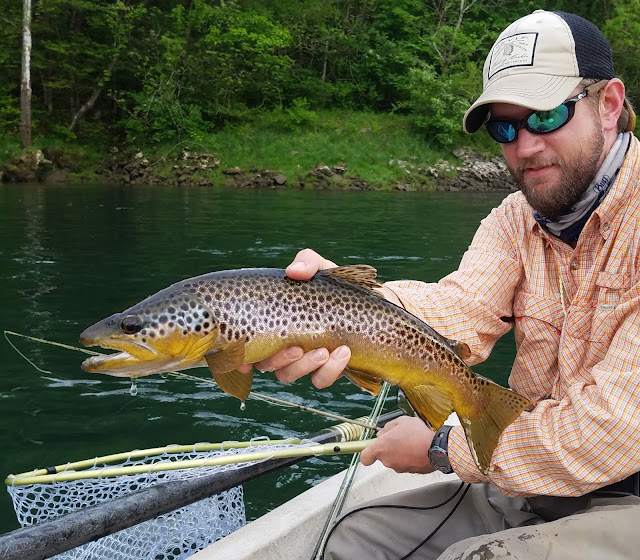The weather began to take an ugly shape and the plan quickly changed. The area was predicted to receive 5+ inches of rain over the next three to four days with the possibility of severe thunderstorms. As responsible adults, one of us anyway, we looked at moving the date. But that wasn't an option. Next we considered heading to Southeast Louisiana or even The Great Smoky Mountains. But the weather system included each of those areas as well. After talking about it, we decided to stay with the original plan but stick to the tailwaters because they would not blow out.
 |
| Tying video for this caddis pupa below |
As luck would have it the rain and storms hit the area as predicted but we only had to fish in the rain one afternoon. Fortune was on our side and the severe storms came at night while we were in our sleeper cabin at http://copperjohnsresort.com/ If you're in the area and need a place to sleep without paying a fortune, Copper Johns is pretty awesome. Located just down the road from the state park and directly on the river, it gave us a quick place to dodge storms if needed.
 |
| Rigging up the streamer rod |
 |
| Add caption |
If you haven't seen the many Instagram and guide posts the hatch was brilliant this year. Check out my buddy Matt's guide service and see what I'm talking about, https://www.facebook.com/risingriverguides/. Tons of bugs on the water and the fish were eating great. We fished dry flies each day with some success, but with all the natural sources of protein available on the surface, it was only a fun option, not the most successful. But I will take a couple 20+ inch browns on a EHC over several nymphed up most days!
On Friday and Saturday we decided to float the Norfork. The generation schedule predicted 1-unit each morning starting around 9am. The fishing was equally great. One-unit is awesome flow for nymphing and streamer fishing which we did and got a few follows from some gnarly browns. I suspect if the rental boat hatch wasn't out in full force on Saturday atleast one of the big browns would have eaten a streamer. But when 4 dudes, throwing rapalas constantly to cut into your drift, it can be a challenge to get a fresh look! We won't be fishing the Norfork on a Saturday any time soon, lol! The rental hatch cleared at lunch the fishing got good for the rest of the afternoon.
We got up early Sunday with plans to pack and drive home. One look at the river and we changed our mind. It looked like it was raining with all the fish coming to the surface to eat caddis. So we hit the water for a few more hours, caught some fish and planned next years trip. Gonna be a long wait...
Tying video for this productive pattern...









Awesome trout---and patterns use to get the takes---just curious do you ever use the pheasant tail to land some of the browns there? It is the number one fly pattern on the Elk and Caney fork in Tennessee. thanks for sharing
ReplyDeleteThanks Bill. Yes, I use a PT pretty regularly when I don't know what they are eating. Now I like to be creative and see if I can come up with something they will eat.
DeleteNICE POST. You definitely do not need streamers when drifting for Browns. Thank you very much for sharing those patterns. I may get out to the Norfork again sometime. Dad likes to fish that tailwater and the Little Red too but he's done well nymphing on the Norfork this past Fall and early Winter.
ReplyDelete